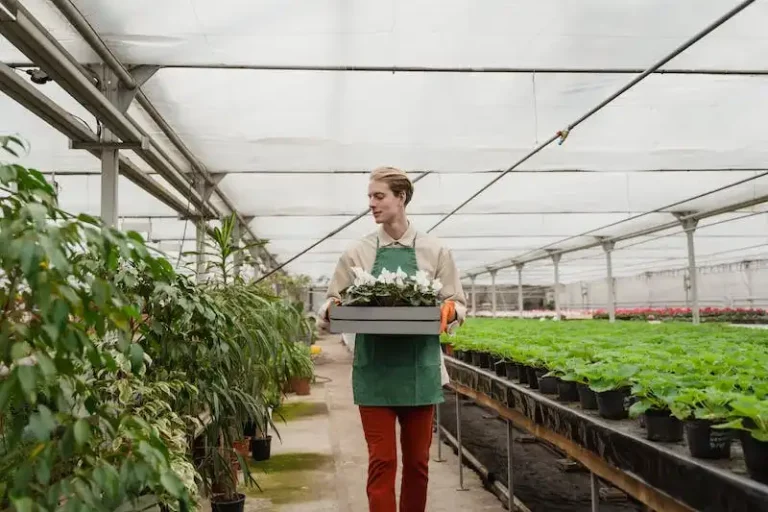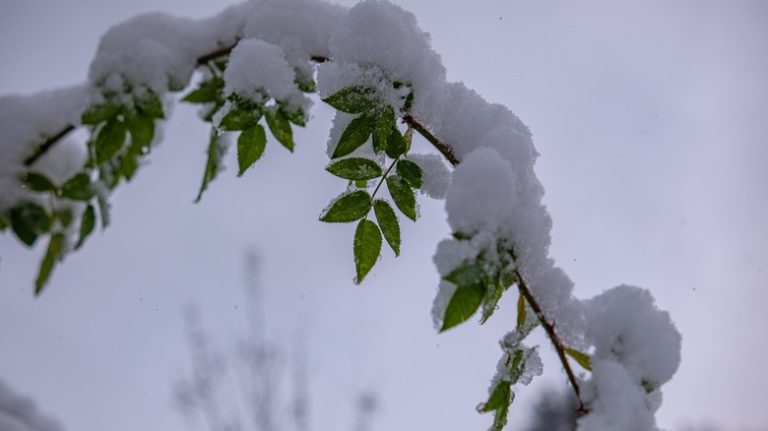If you’re a fan of large, fragrant flowers and beautiful foliage, then the Sweetbay Magnolia is the perfect tree for you. Also known as Magnolia Virginiana, this species is a member of the Magnoliaceae family and is native to areas in the United States, including Florida, Cuba, and as far north as New York.
One of the most important things to note about the Sweetbay Magnolia is its ability to thrive in partial shade. While they do need some sunlight to grow, they are much better suited for shady areas than other magnolia species. This makes them a great choice for yards and gardens that don’t get full sunshine throughout the day.
The Sweetbay Magnolia is also long-living and quite hardy. They can withstand bumpy winters and rough weather conditions, making them a popular choice for those who live in colder zones. Planting this tree is a good idea if you’re looking for a low-maintenance option that can withstand the elements.
When it comes to the appearance of the Sweetbay Magnolia, you’ll find that it has smooth, wide leaves that are oblong-lanceolate in shape. The leaves are a beautiful deep green color that can sometimes be mottled with yellow or brown. In the spring, the tree flushes with small, fragrant flowers that are creamy white with center petals that tend to be red. The fragrance is sweet and captivating, making it a popular choice for those who love scented flowers.
Choosing the perfect spot for your Sweetbay Magnolia is crucial. The tree prefers soil that is damp and well-drained. It also thrives in areas with high humidity, so if you live in a dry climate, you may need to mist the leaves or place a plastic cover over the tree. Sweetbay Magnolias also do well near water, so if you have a pond or swamp in your yard, this tree is a perfect choice.
When it comes to diseases, the Sweetbay Magnolia is generally quite resistant. However, it’s important to keep an eye out for any signs of common magnolia diseases, such as leaf spot or powdery mildew. If you notice any issues, be sure to take proper care and use appropriate treatments to ensure the health and longevity of your tree.
In summary, the Sweetbay Magnolia is a beautiful addition to any garden. Its wide leaves, fragrant flowers, and ability to thrive in partial shade make it a popular choice among horticultural enthusiasts. Whether you live in a colder climate or a warm, humid environment, this tree is sure to stand out and make your garden more vibrant and fragrant.
So, if you’re looking for a tree that will bring beauty and fragrance to your outdoor space, consider planting a Sweetbay Magnolia. You won’t be disappointed!
Sweet Bay Magnolia Tree: What They Don’t Tell You at the Nursery
When it comes to the Sweet Bay Magnolia tree, there are several things that you may not learn from a nursery guide. This distinctive tree is known for its beautiful flowers and evergreen foliage. Here’s a closer look at some lesser-known facts about the Sweet Bay Magnolia:
- The scientific name for the Sweet Bay Magnolia is Magnolia virginiana.
- This tree is also referred to as a swamp magnolia because it tends to grow in swampy areas.
- The flowers of the Sweet Bay Magnolia are yellow and have a lovely fragrance. They bloom during the early summer months.
- The Sweet Bay Magnolia is a hardy tree that can withstand cold temperatures and overwintering in northern regions.
- There are different types of Sweet Bay Magnolia cultivars, such as the Sweet Bay Magnolia ‘Moonglow’.
- The leaves of the Sweet Bay Magnolia are smooth and oblong-lanceolate in shape.
If you decide to plant a Sweet Bay Magnolia in your garden, here are some tips to keep in mind:
- The Sweet Bay Magnolia thrives in full sun to partial shade.
- Make sure to water the tree regularly, especially during the hot summer months.
- It is important to fertilize the Sweet Bay Magnolia tree, as it is a heavy feeder.
- Transplanting the tree can be a bit tricky, so it’s best to do it when the tree is smaller.
- During the winter months, the Sweet Bay Magnolia tree may develop yellowing leaves, which is a natural occurrence.
Overall, the Sweet Bay Magnolia is a great tree to have in your garden. Its distinctive flowers, evergreen foliage, and swampy origins make it a unique addition to any landscape. So, if you’re looking for a hardy and beautiful tree, consider the Sweet Bay Magnolia.
What To Do After You Make a Sweet Bay Magnolia Tree Buy Decision
1. Find the right spot: Sweet Bay Magnolias are hardy in USDA Hardiness Zones 5 to 10. They can tolerate a variety of soil types and do best in well-draining, slightly acidic soils. Choose a location that receives full morning sun and afternoon shade, as this will help the tree stay cool during hot summer days.
2. Prepare the planting hole: Dig a hole that is wider than the root ball of the tree. Make sure the hole is deep enough so that the top of the root ball is level with the soil surface.
3. Plant the tree: Place the tree in the hole, making sure the root ball is centered and upright. Backfill the hole with soil, firming it gently around the roots. Water the newly planted tree deeply to help settle the soil.
4. Keep the tree hydrated: Sweet Bay Magnolias need regular watering, especially during dry spells. Water deeply, making sure the soil is moist but not waterlogged. Yellowing or leaf drop can be a sign of underwatering.
5. Mulch the base: Apply a layer of mulch around the base of the tree, keeping it a few inches away from the trunk. Mulching helps conserve moisture, prevent weed growth, and insulate the roots from temperature extremes.
6. Prune if needed: Sweet Bay Magnolias generally have a natural, shrubby growth habit and don’t require much pruning. However, if you notice any diseased or damaged branches, remove them to promote healthy growth. Pruning can be done in late winter or early spring.
7. Enjoy the blossoms: In late spring or early summer, your Sweet Bay Magnolia will reward you with beautiful, fragrant flowers. The blossoms are creamy white and appear in cone-like segments.
8. Propagating: If you’re looking to grow more Sweet Bay Magnolias, propagating can be done through seed germination or stem cuttings. Keep in mind that seed-grown trees may not resemble the parent tree.
9. Attract birds: Sweet Bay Magnolias are known for attracting birds with their seeds and providing them with shelter. If you’re a bird lover, this tree is a great addition to your garden.
Conclusion: With proper care and attention, your Sweet Bay Magnolia tree will thrive and bring beauty to your garden for years to come. Whether you’re a seasoned gardener or a beginner, this tree is sure to delight with its wide, glossy leaves and stunning flowers.
How To Grow Sweet Bay Magnolia Trees From Seed
The Sweetbay Magnolia (Magnolia virginiana) is a tree species that is similar in appearance to the Southern Magnolia. It gets its name from the sweet fragrance of its flowers, which bloom in the late spring and early summer.
When looking for a location to plant your Sweet Bay Magnolia tree, it is important to find an area with well-drained soil and full to partial sun. The tree is multi-stemmed and has a mottled bark, making it an attractive specimen for any garden or landscape.
The Sweet Bay Magnolia is native to the eastern United States and can be grown in USDA hardiness zones 5 to 9. It is known for its alternate, glossy green leaves and its showy, white flowers. The tree also has a high wildlife value, as birds often feed on its seeds and insects are attracted to its blooms.
If you are looking to plant Sweet Bay Magnolia trees from seed, there are a few steps you can take to ensure success. First, you will need to obtain the seeds. These can be collected from mature Sweet Bay Magnolia specimens or purchased from a reputable nursery or seed supplier.
Once you have the seeds, you will need to prepare them for planting. One method is to soak the seeds in warm water for 24 hours before planting. This will help to soften the seed coat and increase the chances of successful germination.
After soaking, plant the seeds in well-drained soil. It is best to plant multiple seeds to increase the chances of success, as not all seeds may germinate. Plant the seeds at a depth of about one inch and cover with soil.
Water the seeds well after planting, keeping the soil consistently moist but not waterlogged. Sweet Bay Magnolia seedlings can take six to eight weeks to germinate, so be patient and keep an eye on the soil moisture level during this time.
Once the seedlings have started to emerge, you can transplant them to their permanent location. Dig a hole that is slightly larger than the root ball of the seedling and gently place it in the hole. Backfill the hole with soil and water well.
Maintaining the health of your Sweet Bay Magnolia tree is important to ensure its long-term survival. Fertilize the tree in the spring with a slow-release, balanced fertilizer to promote healthy growth. Mulching around the base of the tree will help to conserve soil moisture and suppress weeds.
Sweet Bay Magnolia trees can be susceptible to a few pests and diseases. Watch for signs of yellowing leaves, brown patches, or wilting foliage, as these may indicate a problem. Spider mites and scales are common pests that can infest the tree, so be sure to inspect your tree regularly for any signs of these pests.
In conclusion, growing Sweet Bay Magnolia trees from seed can be a rewarding and enjoyable experience. The tree’s beautiful blooms, compact size, and unique foliage make it a special addition to any garden or landscape. By following the tips outlined above, you will be well on your way to growing healthy and thriving Sweet Bay Magnolia trees.



